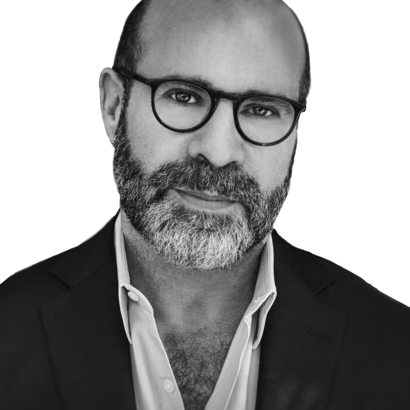In 1730, a fire destroyed Fishbourn’s Wharf, on the Delaware River. Then the blaze spread across the street and destroyed three homes, doing thousands of pounds in damage. The Pennsylvania Gazette published an anonymous letter stating that there was no wind on that particular night and that if the proper equipment had been available—an ounce of prevention is worth a pound of cure, as the letter put it—the outcome might have been different. The author of that letter was secretly the publisher of the paper who then went on to start a volunteer fire brigade in Philadelphia.
Not long after, the same man—Benjamin Franklin—created the Philadelphia Contributionship, which would pay out to its members after a fire: the first fire-insurance firm in America. Not surprisingly, the business idea has stood the test of time. A Mrs. Lydia Biddle was denied membership because her home included a wooden bakehouse that was deemed a fire risk. The actuarial table that made such a decision sensible—and profitable—existed inside Franklin’s head, right next to all those ideas that ended up in the Declaration of Independence.
Last week, my community suffered an unfathomable tragedy. An area greater than the size of Paris burned to the ground.
The winds gusted to more than 100 miles per hour—the equivalent of a Category 2 hurricane. It had not rained for months and months. The National Weather Service had issued a “Particularly Dangerous Situation” warning, a declaration that has only been made two other times in California. Both of those other times, the state burst into flames: first, with the Mountain Fire, in November, and then with the Franklin Fire, in December. With Ben Franklin busy on the $100 bill, some of us pointed our garden hoses at the flames; others pointed fingers at our leaders. It remains a constant of human behavior that in response to the world being out of control, some of us seek to regain our power by assigning blame before we know if it is deserved.
The reality is that the power lines that crisscross the state remain aboveground, sparking away in the record low humidity. The cost of trenching them is problematic—at least, to the bottom lines of the companies that provide our power. The materials that we all—myself included—have used to build our homes are often highly combustible or out of date. The notion of changing the relevant regulations is seen as political. We all vote to keep taxes low and then complain when the civic response is inadequate.
A proposed ban on wooden rooftops was met with a lawsuit from the lumber industry. So private firefighters are hired by those who can afford them. Rooftop sprinklers and diesel-powered pool pumps get added to real-estate listings as selling points. Income inequality starts to look like flame retardant.
Yet, beyond the day-to-day politics, the world we have built no longer matches the climate of the planet we built it on. The curve of these opposing forces—a new climate and an old infrastructure—are pulling hard in opposite directions. The policy decisions we make today function only as the weakest of sutures, doomed to rupture in the next red-flag warning.
Does climate change account for these winds? I do not know, and neither do you. But we do know this is the hottest year on record and that the heat drives moisture from the soil. And we do know that the changing weather patterns are bringing us bigger storms and longer droughts. So we now have more fuel in the forest, more heat in the system, and a fire season that stretches out longer and longer. The Santa Ana has been blowing for thousands of years—all it took was a group of mammals to build the wrong homes in the wrong place in the wrong epoch. As Joan Didion noted, “The winds show us how close to the edge we are.”
The world we have built no longer matches the climate of the planet we built it on.
It is a symptom of our world that ideas such as the insurance industry, which seem decent and beautiful in the abstract, end up in litigation that leaves people heartbroken over their losses. In the days ahead, the Internet will amplify these stories. The most sensational will spread the furthest, much like the blazes we all just witnessed.
The social scientist Daniel Kahneman warned us by saying, “We think of our future as anticipated memories.” But the Pacific Palisades and Altadena around us today do not look like the past—other than in the way it shows that our reluctance to think ahead is our constant companion, with one hand over our eyes and the other hand dipping into our pocket. “Anticipated memories” are the last feeling we have before regret settles in and gives birth to shame and then blame.
These are the lessons that have now been scorched into the souls of those living in Southern California—both leaders and citizens. But we will likely forget that soon—or construct a lattice of blame to allow us to continue living as we were. We will continue on toward the next cliff and then blame the ground when it falls away.
“An ounce of prevention is worth a pound of cure” is an idea one might return to in the days after realizing the fallacy of “anticipated memories.” But first, one must contemplate the difference between correlation and causality. The old joke warns that everyone who fails to realize the difference between the two ends up dead. Fire is a relatively simple chemical reaction, but the reaction to the fire … start by asking the looters dressed up like firemen to explain.
There’s nothing like a natural disaster to teach us all quick lessons in supply and demand—and then leave us to ponder whether capitalism is either the most profoundly naïve or the most cynically barbaric system for how we all are meant to live together on this planet.
Naïve, in that it suggests an endless wellspring of integrity accompanies every fine, new offering that appears in a moment of need.
Barbaric, in that it will do anything—brutal and diabolical—to preserve the treacherous lie hanging right above this sentence like a cloud of smoke.
Scott Z. Burns is a screenwriter, producer, and director


